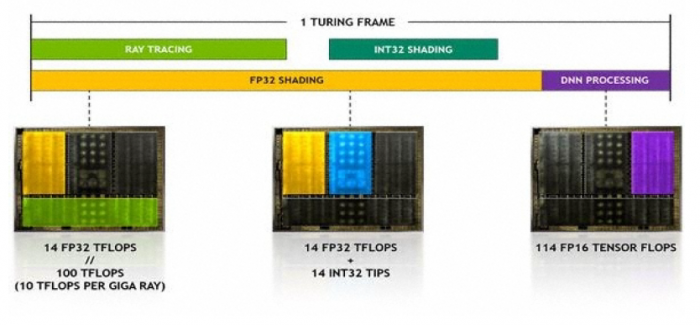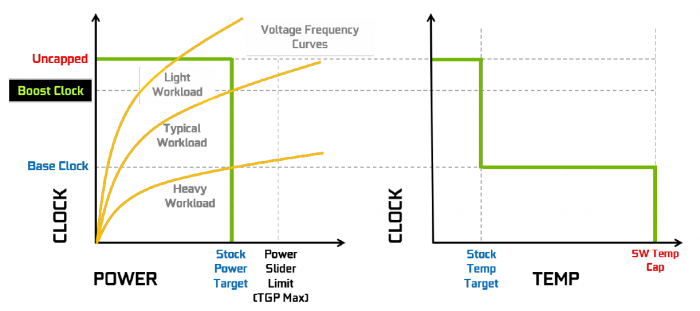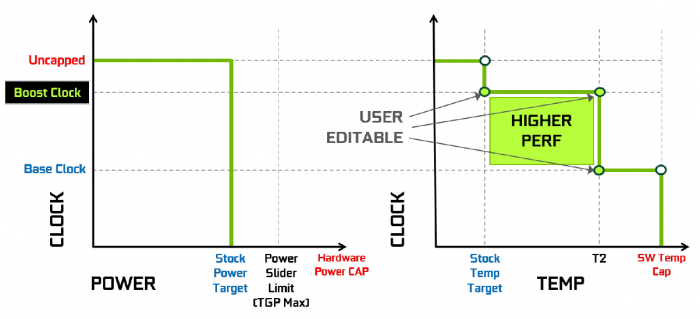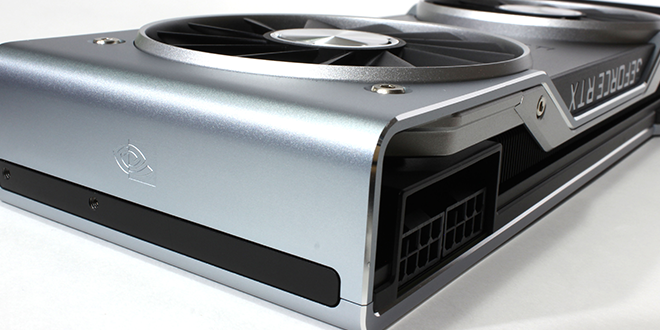Deep Learning Super Sampling
Utilizing Nvidia NGX which is Nvidia deep neural network to build from and create the capability to accelerate graphics rendering by utilizing the Turing Tensor Cores for deep learning based operation. They accelerate Nvidias stored neural network information including stored supersampling data to better offer similar effects as high AA which would normally be very heavy on GPU loading and reducing framerates. Instead, the Tensor cores take a lower quality downsampled image and use the DLSS/Turing Tensor cores to build a super high AA image with a much lower graphical overhead on the shader.
Here is a list from Nvidia of the upcoming games which will support DLSS or be updated to support it.
- Ark: Survival Evolved from Studio Wildcard
- Atomic Heart from Mundfish
- Dauntless from Phoenix Labs
- Final Fantasy XV from Square Enix
- Fractured Lands from Unbroken Studios
- Hitman 2 from IO Interactive/Warner Bros.
- Islands of Nyne: Battle Royale from Define Human Studios
- Justice (Ni Shui Han) from NetEase
- JX3 from Kingsoft
- Mechwarrior 5: Mercenaries from Piranha Games
- PlayerUnknown’s Battlegrounds from PUBG Corp.
- Remnant: From the Ashes from Gunfire Games/Perfect World Entertainment
- Serious Sam 4: Planet Badass from Croteam/Devolver Digital
- Shadow of the Tomb Raider from Square Enix/Eidos-Montréal/Crystal Dynamics/Nixxes
- The Forge Arena from Freezing Raccoon Studios
- We Happy Few from Compulsion Games / Gearbox
- Darksiders 3 by Gunfire Games/THQ Nordic
- Deliver Us The Moon: Fortuna by KeokeN Interactive
- Fear the Wolves by Vostok Games / Focus Home Interactive
- Hellblade: Senua’s Sacrifice by Ninja Theory
- KINETIK by Hero Machine Studios
- Outpost Zero by Symmetric Games / tinyBuild Games
- Overkill’s The Walking Dead by Overkill Software / Starbreeze Studios
- SCUM by Gamepires / Devolver Digital
- Stormdivers by Housemarque
Ray Tracing (RTX)
With Turing as you saw above in the Die map, it is skirted by RT cores which are deployed to enable a world first real-time ray tracing, something that was hinted to still be 10 years away just a short time ago. The cores are only part of the package as it requires Nvidia’s RTX technology along with support for the new DirectX (DXR) Nvidia OptiX and Vulcan ray tracing to ensure that no matter the game engine there is likely to be a ray tracing opportunity to give a more immersive gaming environment.
Here is a list of the confirmed upcoming RTX games which will be RTX Enabled or will soon be
- Assetto Corsa Competizione from Kunos Simulazioni/505 Games
- Atomic Heart from Mundfish
- Battlefield V from EA/DICE
- Control from Remedy Entertainment/505 Games
- Enlisted from Gaijin Entertainment/Darkflow Software
- MechWarrior 5: Mercenaries from Piranha Games
- Metro Exodus from 4A Games
- Shadow of the Tomb Raider from Square Enix/Eidos-Montréal/Crystal Dynamics/Nixxes
- Justice (Ni Shui Han) from NetEase
- JX3 from Kingsoft
- Project DH by Nexon
Hybrid Rendering (RTX-OPS)
With Turing, we have now seen the introduction of not just your normal SM but RT Cores and Tensor cores for AI. This enables a new Hybrid Rendering method where as mentioned previously, Ray tracing or RT cores are used for lighting workloads and Turing cores are used for AI calculations to accelerate rendering along with other features I’m sure to come along with traditional rendering methods for rasterization.
Obviously, not all of these will be at use all the time, and with that Nvidia ran some very deep mathematical calculations to show how RTX ops are calculated. Since I am quite sure most of you would not care about that I’m not gonna dig too deep into it but I will add it below for your reference, or for those like me who geek out on that kind of stuff.

The above is a visual representation of the hybrid rendering (RTX-OPS) calculation you will find below.
To compute RTX-OPs, the peak operations of each type based is derated on how often it is used. In particular:
– Tensor operations are used 20% of the time
– CUDA cores are used 80% of the time
– RT cores are used 40% of the time (half of 80%)
– INT32 pipes are used 28% of the time (35% of 80%)
For example, RTX-OPS = TENSOR * 20% + FP32 * 80% + RTOPS * 40% + INT32 * 28%
The above is an illustration of the peak operations of each type for GTX 2080 Ti. Plugging in those peak operation counts results in a total RTX-OPs number of 78. For example, 14 * 80% + 14 * 28% + 100 * 40% + 114 * 20%.
GPU Boost 4

This is how your typical previous gen GPU Boost 3 implementation would work. As you can see the adjustment takes you straight across based on a power target/limit which you would set within the 3rd party app (Precision/Afterburner/etc) of your choice. however, the control was quite limited in terms of granularity. This is because the GPU boost 3 implementations while a good solution was mostly hidden in the driver away from users ability to really adjust it with the exception of the target sliders.

GPU Boost 4 is a completely different animal as it allows you to set steps so that instead of dropping straight down to base clock when thermal limits are hit, it instead allows a lower boost clock plateau to be reached giving the card a chance to cool itself off at a higher boost speed rather than dropping drastically down to base clock. This, in turn, means more consistent control of your performance, thermals and acoustic characteristics of your GeForce card.
 Bjorn3D.com Bjorn3d.com – Satisfying Your Daily Tech Cravings Since 1996
Bjorn3D.com Bjorn3d.com – Satisfying Your Daily Tech Cravings Since 1996









Two years later a new generation card should deliver around the performance the 2080ti does however the price is also expected to stay equal or less than the card it replaces. This is where the 2080ti fails big time and it’s sad to see reviewers ignore the fact. All serious reviewers should ignore nvidia marketing and compare the cards to similarly priced previous gen cards. So 1080 to 2060, 1080 to 2070 and 1080ti to 2080.
I agree, if this was a direct comparison as in Rasterization to Rasterization that would be 100% true and this review would be much different. However, as in life, things are much different and it has nothing to do with Nvidia’s marketing but more to do with having a long view on the direction of the industry. There is a lot at work which will come around as this all matures and new features really get to be explored. Thank you for the comment and for giving it a read as I always welcome constructive feedback. That being said, I would definitely revisit not just my review but others as the new features change the way you can render in-game scenes and opens the doors to next level performance differences along with massively more immersion with what the new real-time ray tracing capabilities start to show up.
I do agree that the new tech will change how rendering is done, in a GPU generation or two as it is the right way forward. But the 2080 and 2080ti cards simply do not currently deliver the value for anyone but developers that need to work on this for 1-3 years before it hits the market for real.
A card should be reviewed from a ‘consumer’ perspective. The consumer here being the gamer not a developer. Any existing consumer with a 1080ti looking to upgrade would be considering to spend around the same as amount for a new card. So his upgrade here is the 2080.. The 2080 does not currently provide the usual generational performance increase and is therefore close to worthless as a upgrade. If the consumer was willing to spend $1200 his existing card would most likely be a Titan X.
So from this perspective the 2080 upgrade is turing and rtx cores and they are not supported in DX12 yet (with luck it comes in October), furthermore there are no games currently available.
So all in all you are buying something that might work but most indications point to RTX forcing you to go from 4k -> 1080p on a 2080TI and the 2080 will probably not do well at all. This leaves DLSS as the only real gain.
Now if NVIDIA has launched this without marketing bullshit trying to sell a titan as a TI I would have no issues because people know what they are buying and all reviews would be done correctly comparing apples to apples instead of apples to oranges.
So the conclusion for now is that the 2080 card probably only provides DLSS as a improvement over a TI for a higher price as the RTX cores most likely wont be able to render in a usable resolution for guys doing 4k or 144hz gaming .
Furthermore I would expect the 2080 FE (factory overclocked card) to be compared to a equally overclocked 1080 TI.
Any conclusion that skips these obvious issues are hard to take serious.
Very well said Reviewers are missing this very important point: nvidia is ripping us off with this outrageous prices
This is not true, as in any market the tech will go for what the market will bear. If you are not happy with the prices, you have no requirement to make a purchase or even buy when a model which meets your expectations show up. I have no skin in this game as far as what Nvidia sells their product for, of course as a consumer I would love to see it for 500 or even 99 bucks but the amount of research and time that goes into these products it is simply not feasible.
Same goes for any tech product… Try telling Tesla their products (cars) are overpriced.. Many feel that way and they choose not to purchase them, but knowing what I know about them, same as I know about this tech I would buy one if I could… today…
IF this were true I would definitely agree. but we have seen games which are in process of adding these features now.. many games which already exist and more are gonna be added to this list soon I am sure. I would definitely agree once again if this was some far off tech, but it’s simply not. This is tech we will see implemented within the next few quarters is what I am seeing.